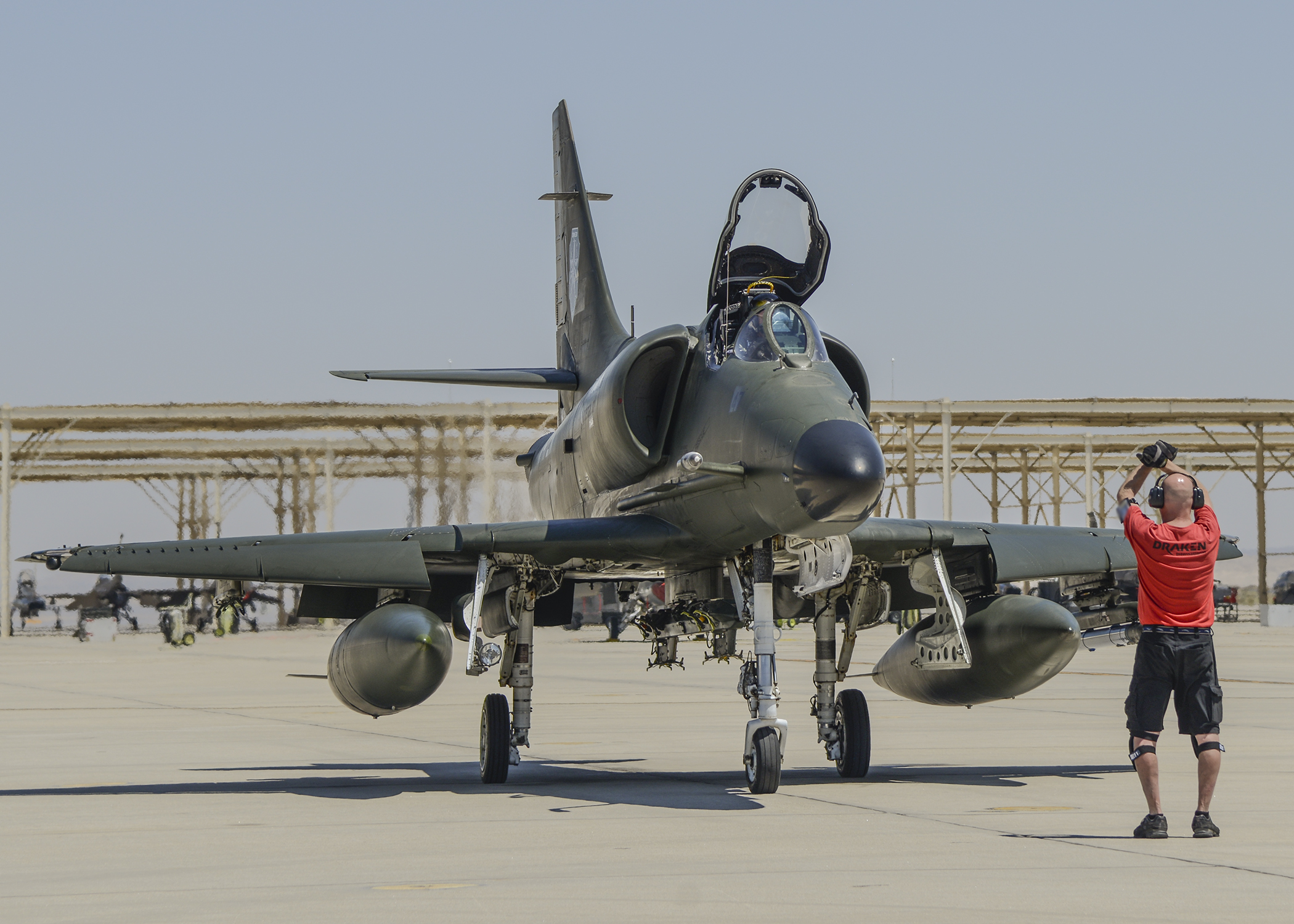
A Draken International A-4 prepares for takeoff in Aug. 2015 at Edwards AFB, Calif., in a “red air” adversary flight. The Air Force on Aug. 24 released its long-awaited request for proposals for contracted adversary air support, after months of speculations and concerns raised by industry. Air Force photo.
The Air Force on Aug. 24 released its long-awaited request for proposals for contracted adversary air support, after months of speculations and concerns raised by industry.
FedBizOpps.
This amount may increase both within the Air Force and possibly to other departments. Under the solicitation, the contractor needs to provide “aircraft; aircraft systems support; pilots; aircraft maintenance support equipment; program, quality and contract management” to meet requirements of the combat Air Forces.
The Air Force plans to award an indefinite delivery, indefinite quantity contract with an ideal contractor providing an aircraft that can fly Mach 1.5. The aircraft must be able to track “blue” aircraft beyond visual range, employ captive air training missiles, be able to video record an engagement, and carry electronic attack pods, among other characteristics.
indicated plans to award the contract in 2019 or 2020. Responses to the request are due by Sept. 7. Several companies have expressed interest, including Tactical Air Support, Top Aces, Airborne Tactical Advantage Company, and Draken.
June. The Air National Guard has awarded a contract for adversary air at six bases, and US Air Forces in Europe is also considering awarding a similar contract.
The Air Force is looking to rely more on contractors to fly as adversaries after it has greatly reduced its own aircraft and airmen used as aggressors. One F-15 aggressor squadron was shut down in 2014, with only two remaining — the 64th Aggressor Squadron at Nellis and the 18th Aggressor Squadron at Eielson AFB, Alaska.
“In a perfect world we’d have enough resources to maintain the aggressor squadrons we used to have and bring [this training] in house,” Air Combat Command boss Gen. Mike Holmes said last September. “… In the world we’re living in now, I don’t want to have to trade an actual fighter squadron for an aggressor squadron because of limits on my budget. The next best thing is to see if we can contract some portion of that red air out.”
